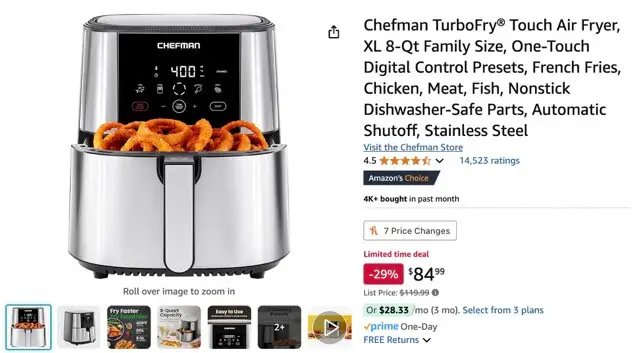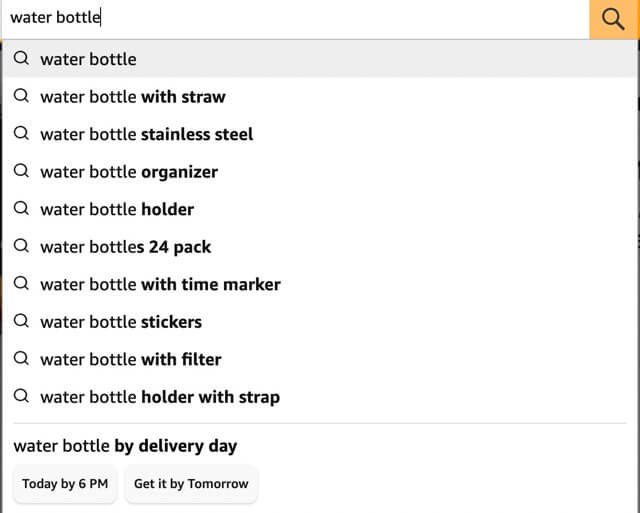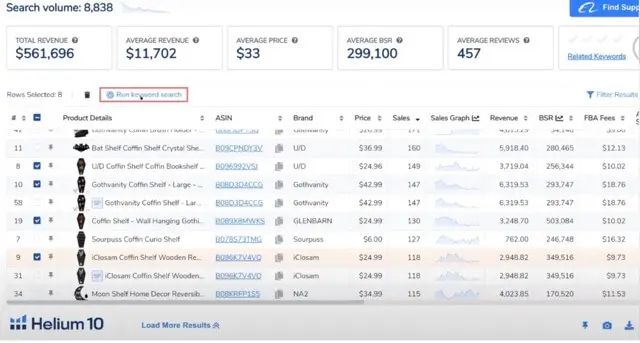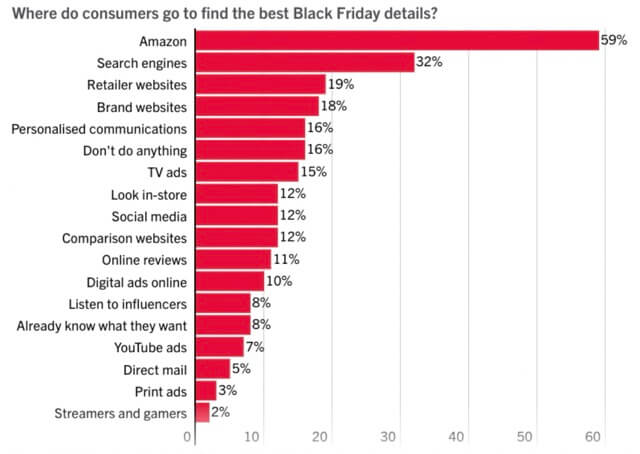Amazon draws billions of visitors each month. This creates a large chance for sellers to show products and get new customers. Getting traffic to a new store on Amazon can be hard.
Amazon’s search engine works differently from Google’s. Buyers on Amazon want to buy. Amazon ranks products that are right for the buyer and sell well. This means Amazon keyword research needs to find words that lead to clicks and sales.
This guide will show you how to build a strong keyword list. You will learn and develop skills on how to generate a strong keyword list, analyze competitors, optimize your listings for maximum visibility, and more.
What is Amazon’s Search Algorithm?
Amazon’s search algorithm is called A9. This system decides which products appear when a customer types words into the search bar. A9 scans Amazon’s product database. It chooses the best product listings. It uses keywords, sales results, and customer actions to do this.
How Amazon SEO Works
Amazon’s search algorithm has one main goal: to help customers find products they want to buy.
Google’s search algorithm ranks pages based on how relevant they are. It also uses backlinks and site authority. Amazon’s SEO algorithm focuses on sales. Products that sell more often rank higher.
Product relevance is important for ranking. Your listing needs to match what shoppers search for. If your product title, bullet points, and hidden search terms use the right keywords, your product gets a better chance of appearing in search results. This is the first step.
Product performance is very important. Amazon watches how many people click your listing. It tracks how long they stay on the page. Most importantly, it tracks how often they buy. If people click but do not buy, your ranking may drop. If people buy quickly and often, Amazon sees your product as a good choice. It then ranks the product higher.
Price, customer reviews, and shipping methods also affect rankings. For example, lower prices and Prime shipping can make your product more visible. Buying with Prime increases the chance of a purchase by 25% for customers outside Amazon. More good reviews increase sales. More sales help when building an email list for marketing.
The CHEFMAN air fryer listing shows many reviews. It likely appears higher than other products because of this.

At its core, keyword use matters most. If you do not use the right words in the right places, you lose visitors before you can compete.
What are Amazon Keywords?
Amazon keywords tell the platform what your product is. They also say who your product is for. When shoppers search, Amazon checks its listings to find the best match. The right keywords in the right places decide if your product shows on the first page or not at all.
There are two main methods:
- Visible keywords: Your customers see these keywords in your product title, bullet points, and description. They directly impact how your listing looks in search results.
- Invisible keywords: These keywords are mainly hidden and you can only add them in the “Keywords” section via Amazon Seller Central. Customers do not see them, but Amazon uses them to rank your product. These are useful for adding other words, different names, or other search terms that do not fit in your visible listing.
To make your product easy to find, you need to know about different keyword types. You also need to know how they change your ranking.
- Short-tail versus long-tail keywords: Short-tail keywords are general and have high competition. Examples are “headphones,” “desk lamp,” or “running shoes.” Many people search for these words daily. But ranking for them is hard unless your product already sells well. Long-tail keywords are more specific. They attract shoppers who know what they want. They are not just looking around. Instead of “headphones,” a long-tail keyword might be “noise-canceling Bluetooth headphones for travel.” Someone searching for this is likely ready to buy. Ranking for this kind of term is often easier because it has less competition.
- Branded versus non-branded keywords: Branded keywords include a brand name. Examples are “Sony noise-canceling headphones” or “Nike trail running shoes.” If you sell a product with a brand name, use branded keywords. Shoppers searching for these terms already trust the brand. Non-branded keywords focus on the product itself. They do not use a brand name. Instead of “Keurig coffee maker,” a non-branded keyword might be “single-serve coffee machine with reusable filter.” If you sell a product without a brand name or your own brand, non-branded keywords are best. They reach customers who care more about product features than brand names.
How to Do Amazon Keyword Research Well the First Time
When trying to rank your products on Amazon, do not just fill them with random words. Make sure you understand how shoppers search. Make sure Amazon knows your product is what they need. A good keyword plan starts with a strong base. Here is how to do it correctly from the start.
Identify Seed Keywords
When doing Amazon keyword research, start with a seed keyword. A seed keyword is a wide, general word. It helps you find other keywords that are relevant, have strong buyer intent, and have less competition. These are the most basic words someone might use to describe your product.
Amazon keyword research is not just for sellers with many products. It’s also a quick way to make money through affiliate marketing. By finding popular keywords with strong buyer intent, you can create content. This content can be product lists, reviews, or comparison blogs. This content targets those exact search terms and includes affiliate links to Amazon products.
For example, if you sell a stainless steel water bottle, your seed keywords might be “water bottle,” “steel bottle,” or “reusable bottle.” The goal is not to make the biggest keyword list. The goal is to make a basic list. You can then add more specific keywords later that lead to sales.
You can combine this with Amazon’s affiliate program. You can earn money on every sale. You do not need a product, packaging, or shipping.
Think like a customer. If you did not know what your product was called but needed to find it, what would you type into Amazon? Write down every relevant word or phrase. Then, use Amazon’s search bar and suggestions to see what real shoppers search for.

Use Amazon-Specific Keyword Research Tools
Once you have seed keywords, you need to expand them. Use data to make them better. Amazon-specific keyword research tools help you find search volume. They show how much competition there is. They also show the related words shoppers use. They can even show how likely a keyword is to lead to a sale.
Helium 10, Jungle Scout, and MerchantWords are popular tools for Amazon keyword research.
For example, Helium 10 shows results for “coffin shelf.” You can see the total search volume, money made, average reviews, average price, and average best sellers rank (BSR).

When choosing keywords, balance is key. You want to find keywords that get enough searches to bring visitors. But they should not be so competitive that ranking is almost impossible. Look for a mix of terms that are searched a lot. Also, look for long-tail keywords that show a strong desire to buy.
Analyze Competitor Listings
Look at the keywords your competitors use. Check the best-performing product listings in your area. This will help you see which keywords bring visitors and sales.
Look at their product titles, descriptions, and bullet points. See how they used keywords. Pay attention to the types of keywords they use. Do they focus on features, brand names, or benefits?
What about keywords for seasons or holidays? Smart competitors often use keywords for certain holidays or sales.
For example, customers often go to Amazon to find Black Friday deals. So, when you check competitors, you will likely find many use Black Friday keywords in their product listings and titles.

Implement Keywords in Your Product Listing
Now you have a strong list of keywords. Place them throughout your product listing.
- Title: Include main keywords. Keep the title easy to read and clear.
- Bullet points: Add relevant keywords naturally. Highlight key features.
- Description: Use more keywords. Explain what the product does and how to use it.
- Backend keywords: Add other words, different spellings, or related terms that did not fit in the visible parts.
After your listing is active, track how your keywords perform. Use Amazon’s own tools or other platforms like Helium 10 or Jungle Scout. Measure how your keywords affect your product’s visibility and sales.
Are some keywords not bringing visitors or sales as you hoped? Replace them with others from your list. Or, change how you use them. You can also try different versions to see what works best.
Also Read: What is Amazon OTP (One-Time-Password Text)?
Conclusion
To do well with Amazon keyword research, you need to know which terms will make your product stand out. Choosing the right keywords helps you start. But after your product listing is active, your work continues. Keep track of how those keywords are performing. If you are not getting the results you want, change your approach. This is an ongoing process. Staying on top of it will make your product different from others.


Comments are closed